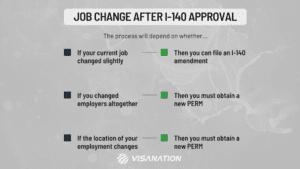How the SECURE Act Impacted Your Stretch IRA
Today, few employers fund pensions and Social Security retirement benefits have not kept up with the cost of living. Consequently, many of my clients contribute to an Individual Retirement Account (IRA) during their working years to ensure they have sufficient assets available when they retire. If your IRA is a “stretch IRA” it is crucial to understand how the recently enacted SECURE Act impacts that account. With that in mind, the Indianapolis estate planning attorneys at Frank & Kraft explain how the SECURE Act impacted your stretch IRA.
What Makes an IRA a “Stretch” IRA?
A “stretch” IRA is not a specific type of IRA. Instead, the term refers to a financial strategy that allows people to stretch out the life and tax advantages of an IRA (typically a traditional IRA) by designating a second-generation beneficiary. Stretching out an IRA gives the funds in the account more time to grow and allows the IRA to be passed on from generation to generation tax deferred.
With a traditional IRA, the account owner must begin taking the required minimum distribution (RMD) by April 1 of the year after turning 72. The RMD is calculated by taking the account balance on Dec. 31 of the previous year and dividing that number by the number of years left in the owner’s life expectancy (as listed in the IRS “Uniform Lifetime” table). Each year, the RMD is calculated by dividing the account balance by the remaining life expectancy. Under the old rules, non-spousal beneficiaries were also required to start withdrawing funds from the IRA, even if the IRA was a Roth IRA that doesn’t carry RMDs for the original account holder. The “stretch” part of the IRA was found in the ability to base the RMDs on the beneficiary’s own life expectancy. The younger the beneficiary, the lower the RMD, and the longer the funds remain in the account. For example, a beneficiary who is 20 years old when distributions start had an RMD based on a life expectancy of 50-60 additional years, meaning the funds in the account continued to grow for 50-60 years. That extra time provided significant tax-deferred growth while also reducing the income tax due on the distributions.
How Did the SECURE Act Impact Stretch IRAs?
Part of the spending bills passed by the U.S. Senate on Dec. 19, 2019, and signed into law by President Donald Trump, the SECURE Act effectively ended the ability to create a stretch IRA. Under the provisions of the SECURE Act, non-spouse beneficiaries will have to withdraw all the funds in the inherited IRA within 10 years from the death of the original account owner. The new provisions apply to IRAs that were inherited after Dec. 31, 2019. If an account was inherited prior to that date, the old rules continue to apply, meaning beneficiaries may continue to take distributions over their life-expectancy period.
If your estate plan includes a stretch IRA that was created prior to the passage of the SECURE Act, it is in your best interest to sit down with your estate planning attorney and review your overall plan. Because you and your beneficiaries will no longer benefit from the “stretch” aspect of the IRA, you may need to revise your estate plan accordingly.
Contact Indianapolis Estate Planning Attorneys
For more information, please join us for an upcoming FREE seminar. If you have additional questions or concerns about estate planning, contact the experienced Indianapolis estate planning attorneys at Frank & Kraft by calling (317) 684-1100 to schedule an appointment.
Paul Kraft is Co-Founder and the senior Principal of Frank & Kraft, one of the leading law firms in Indiana in the area of estate planning as well as business and tax planning.
Mr. Kraft assists clients primarily in the areas of estate planning and administration, Medicaid planning, federal and state taxation, real estate and corporate law, bringing the added perspective of an accounting background to his work.
Latest posts by Paul A. Kraft, Estate Planning Attorney (see all)






